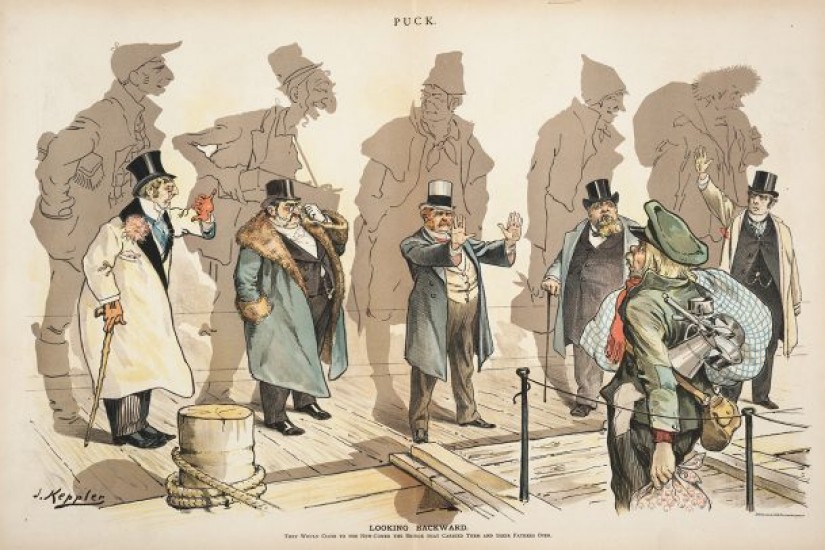In August 1912, Harvard president emeritus Charles William Eliot addressed the Harvard Club of San Francisco on a subject close to his heart: racial purity. It was being threatened, he declared, by immigration. Eliot was not opposed to admitting new Americans, but he saw the mixture of racial groups it could bring about as a grave danger. “Each nation should keep its stock pure,” Eliot told his San Francisco audience. “There should be no blending of races.”
Eliot’s warning against mixing races—which for him included Irish Catholics marrying white Anglo-Saxon Protestants, Jews marrying Gentiles, and blacks marrying whites—was a central tenet of eugenics. The eugenics movement, which had begun in England and was rapidly spreading in the United States, insisted that human progress depended on promoting reproduction by the best people in the best combinations, and preventing the unworthy from having children.
The former Harvard president was an outspoken supporter of another major eugenic cause of his time: forced sterilization of people declared to be “feebleminded,” physically disabled, “criminalistic,” or otherwise flawed. In 1907, Indiana had enacted the nation’s first eugenic sterilization law. Four years later, in a paper on “The Suppression of Moral Defectives,” Eliot declared that Indiana’s law “blazed the trail which all free states must follow, if they would protect themselves from moral degeneracy.”
He also lent his considerable prestige to the campaign to build a global eugenics movement. He was a vice president of the First International Eugenics Congress, which met in London in 1912 to hear papers on “racial suicide” among Northern Europeans and similar topics. Two years later, Eliot helped organize the First National Conference on Race Betterment in Battle Creek, Michigan.
None of these actions created problems for Eliot at Harvard, for a simple reason: they were well within the intellectual mainstream at the University. Harvard administrators, faculty members, and alumni were at the forefront of American eugenics—founding eugenics organizations, writing academic and popular eugenics articles, and lobbying government to enact eugenics laws. And for many years, scarcely any significant Harvard voices, if any at all, were raised against it.
Harvard’s role in the movement was in many ways not surprising. Eugenics attracted considerable support from progressives, reformers, and educated elites as a way of using science to make a better world. Harvard was hardly the only university that was home to prominent eugenicists. Stanford’s first president, David Starr Jordan, and Yale’s most acclaimed economist, Irving Fisher, were leaders in the movement. The University of Virginia was a center of scientific racism, with professors like Robert Bennett Bean, author of such works of pseudo-science as the 1906 American Journal of Anatomy article, “Some Racial Peculiarities of the Negro Brain.”
But in part because of its overall prominence and influence on society, and in part because of its sheer enthusiasm, Harvard was more central to American eugenics than any other university.
